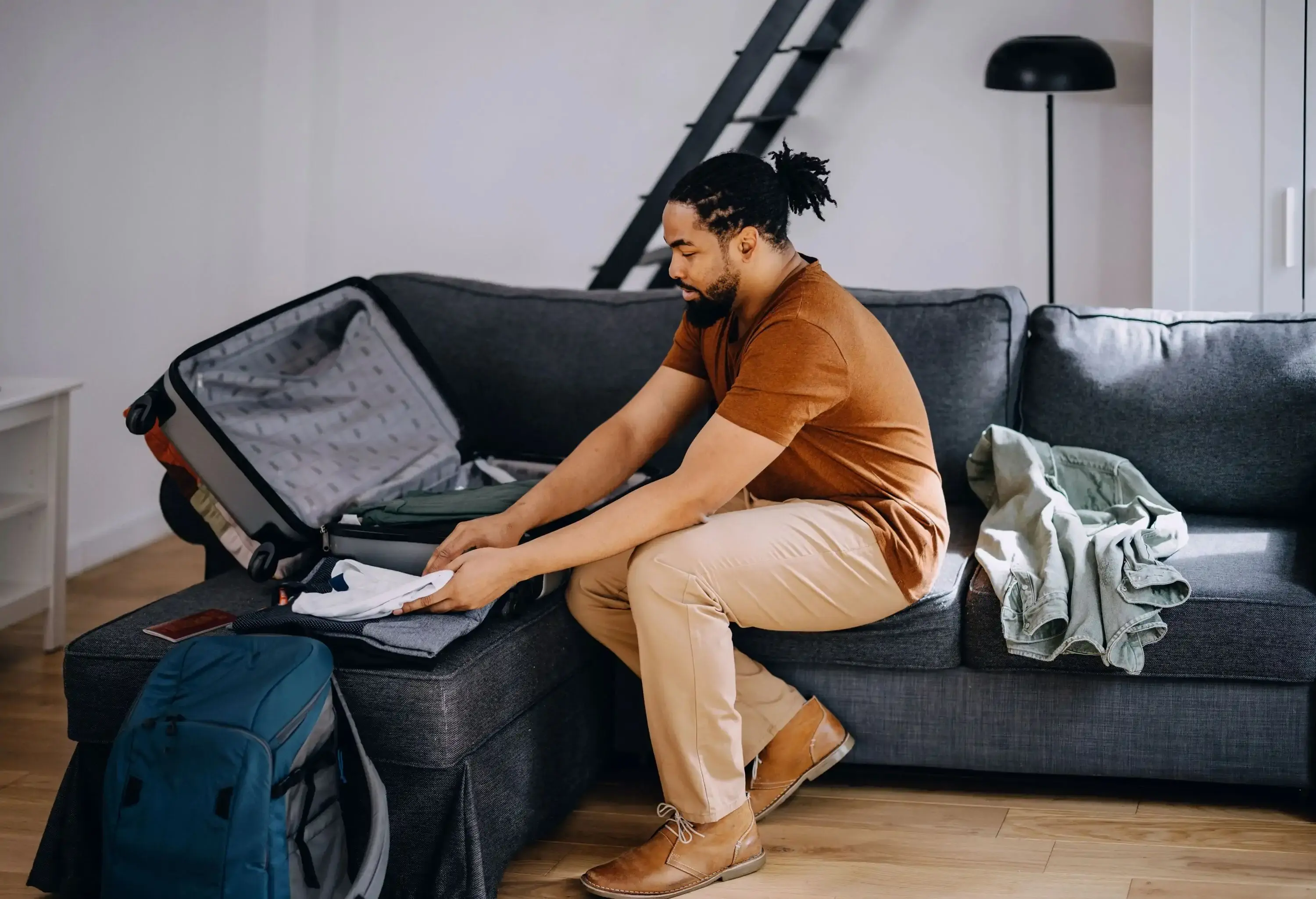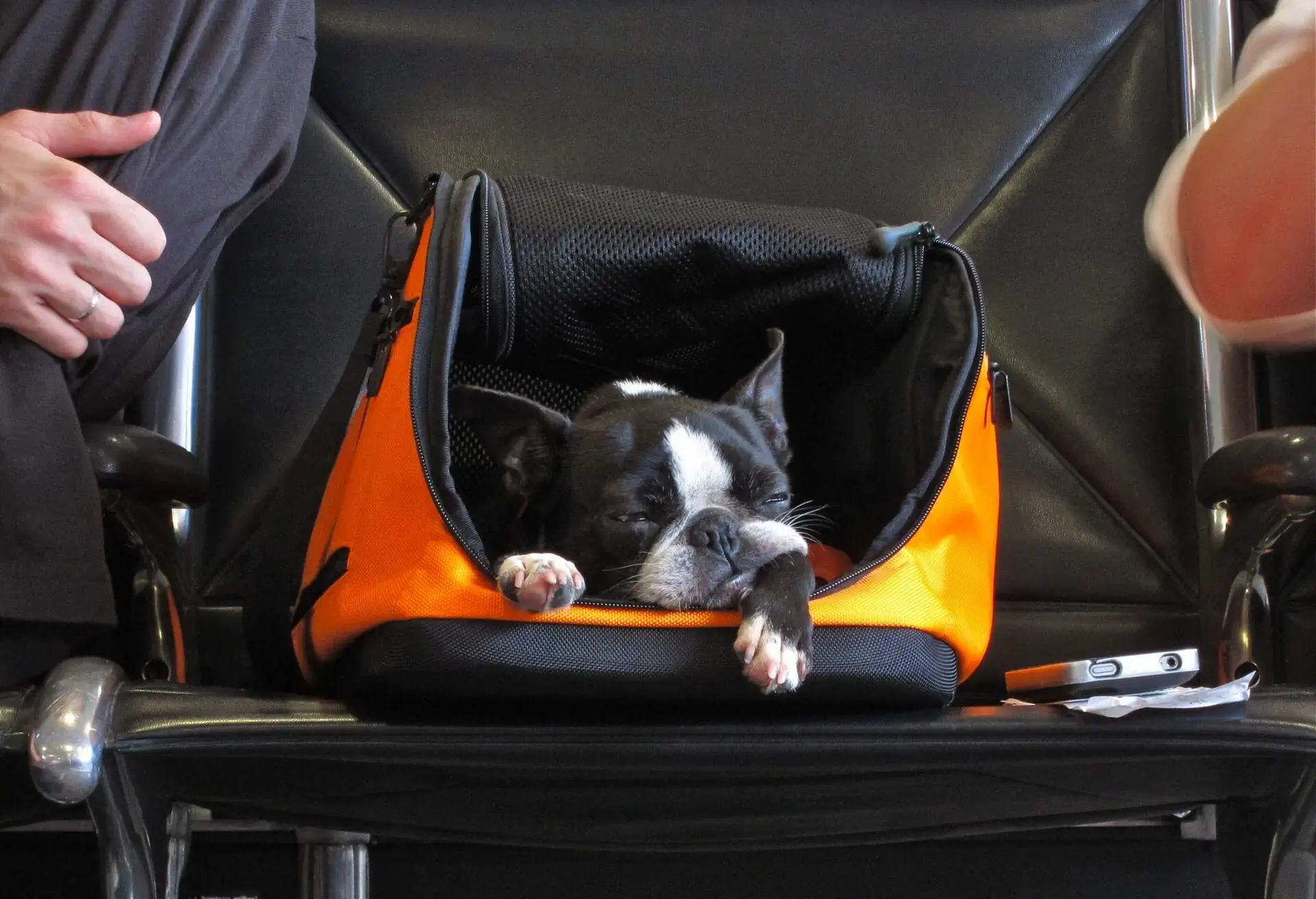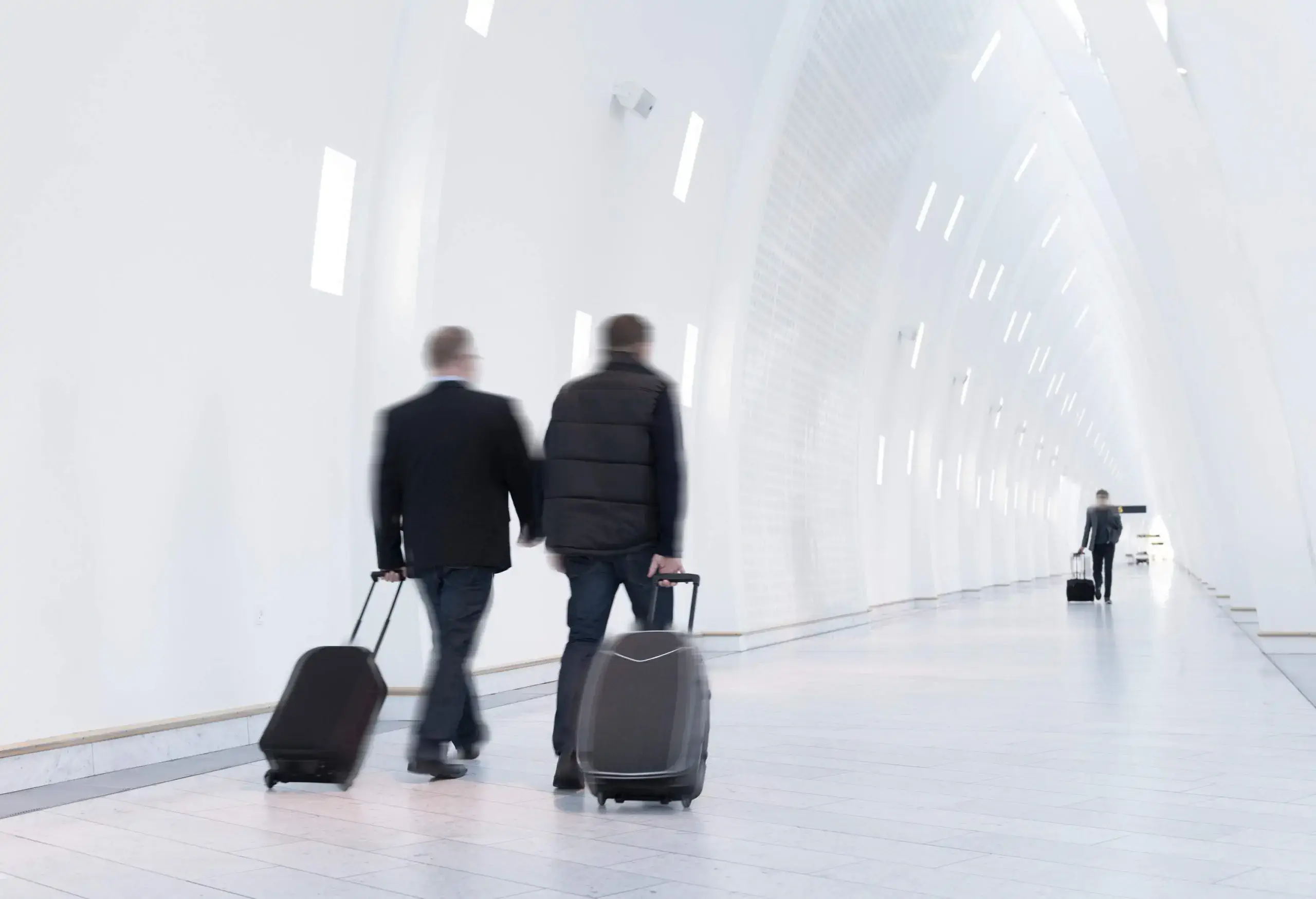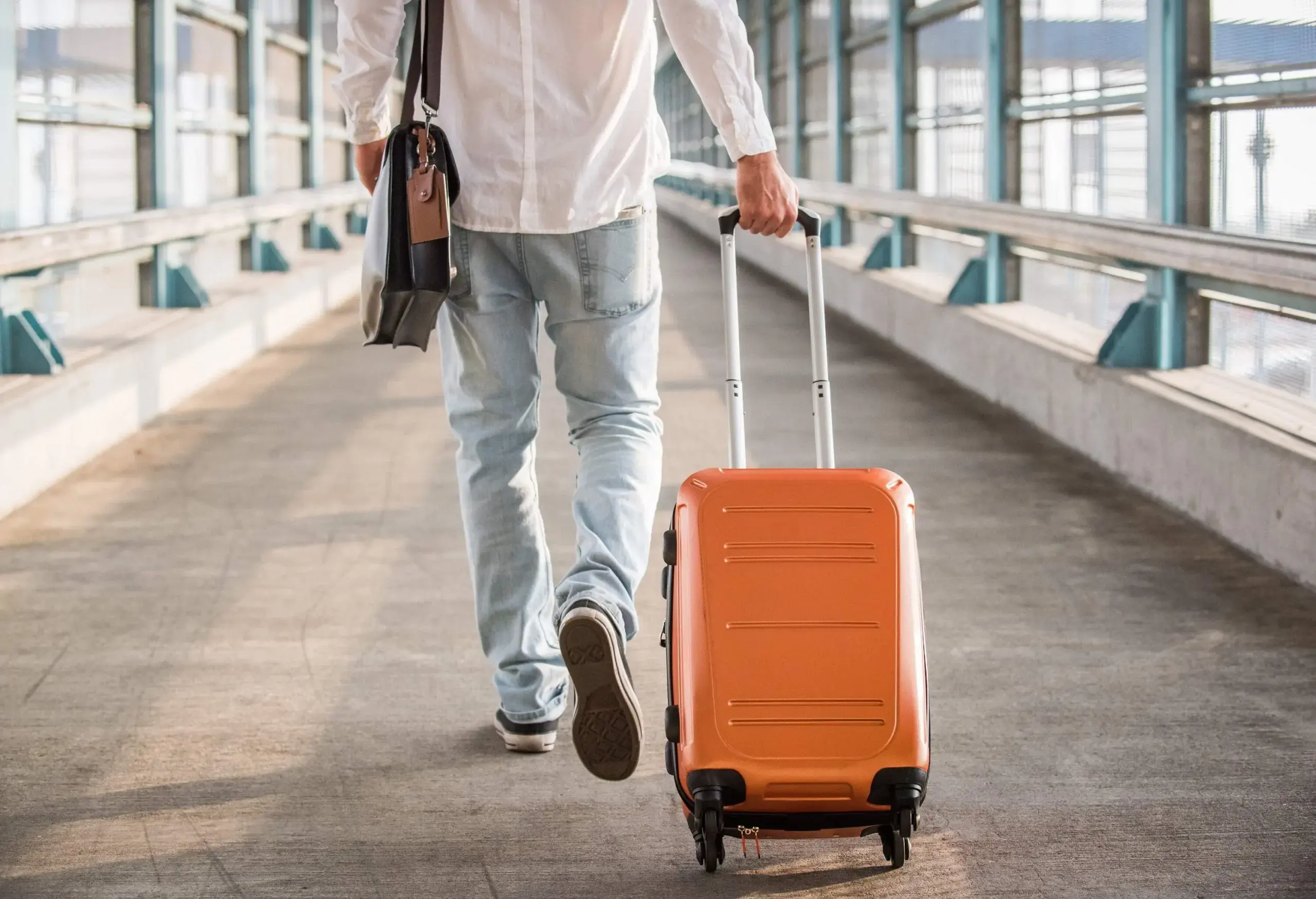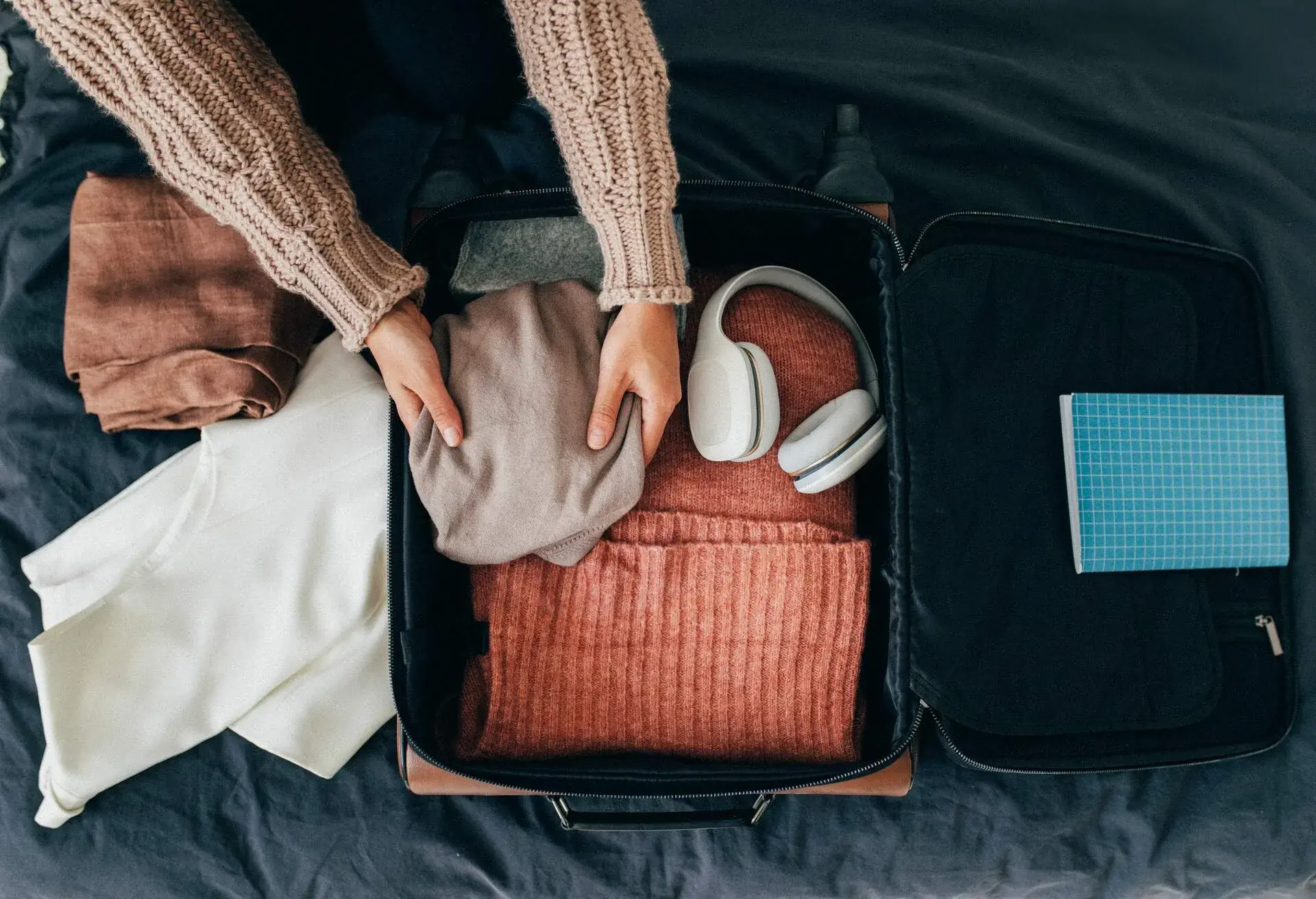Canada’s flag carrier has a similar carry-on bag policy to US airlines. But there are some key differences to keep in mind. Here’s what to know about Air Canada carry-on size, personal items, and more.
What are Air Canada carry-on dimensions?
According to Air Canada carry-on baggage size rules, passengers are allowed one standard carry-on bag and one personal item (with the exception of Economy Basic fares; more on that below). All items must comply with the following size dimensions, including wheels, handles and attachments.
Air Canada does not specify a weight limit for carry-on luggage or personal items, but you must be able to lift bags unassisted.
Personal items and other extra carry-on items
Carry-on rules for Air Canada Economy Basic
Not-so-good news for fans of Economy Basic, Air Canada’s lowest fare category: As of January 2025, the carrier has a new carry-on policy. Now, these ticket holders are only allowed to bring a personal item on board on flights:
- within Canada
- to and from the US (including Hawaii and Puerto Rico)
- to and from Mexico, Central America and the Caribbean
Any additional baggage (such as a carry-on bag or suitcase) will need to be checked in for a fee at the airport.
The dimensions for standard carry-on bags and personal items on Air Canada are slightly smaller than those of US-based carriers. That may not be an issue, but it’s something to keep in mind while you’re choosing which suitcase or bag to bring. (Hint: Go for the smaller one.)
Blane Bachelor
Air Canada’s carry-on rules for children’s items
Air Canada has a fairly straightforward policy for baby and children’s items as carry-ons. It allows passengers on infant care item, such as a diaper bag, in addition to the standard carry-on allowance. Car seats (which Air Canada refers to as child restraint devices) are allowed, but you must purchase a seat for your child.
Strollers are allowed onboard as carry-on items, but they must be collapsable. The collapsed diameter is not permitted to exceed 10 inches (25.5 cm), and its length can’t exceed 36 inches (92 cm).
Medical equipment on Air Canada: What’s allowed as a carry-on
Air Canada has a specific list of medical items and equipment that do not count toward your carry-on allowance. Those include:
- Mobility aids and devices such as braces, a cane or walker, crutches or other special need items, as well as tools required for those devices
- Battery-powered medical equipment, such as CPAP and sleep apnea devices
- Medication in its original and labeled container
Sports items as carry-on luggage for Air Canada
Athletes planning to travel with sports gear on Air Canada should definitely check out the “special items” section on the carrier’s website. It provides a long list of specific equipment — from javelin poles to ice skates — and key information, such as which items are allowed onboard or as checked luggage as part of Air Canada carry-on luggage requirements.
Carry-on allowances for connecting Star Alliance member flights
Passengers traveling with another Star Alliance partner may be subject to the baggage policy and other rules of the airline operating the first flight in the itinerary. Star Alliance Gold members traveling across two or more member carriers are allowed two carry-on baggage items.
Air Canada carry-on bag FAQs
For quick answers to your questions about Air Canada carry-on bag size, read on.
Air Canada does not specify a weight limit for either a carry-on bag or a personal item. However, it does note that passengers should be able to lift their bags unassisted.
As it states on its website, Air Canada carry-on size is “strictly enforced.” Passengers in one of the first boarding groups or with frequent flyer status may be allowed a little more leeway. However, expect agents to be more strict than on other airlines, especially on full flights.
Yes, if you’re not flying with an Economy Basic ticket! You’ll also need to make sure both items fall within the size restrictions as noted above.
What is Air Canada’s carry-on pet policy?
Air Canada carry-on rules for musical instruments
Air Canada counts musical instruments as part of passengers’ carry-on allowance as either a standard or personal item, depending on the size of the instrument.
However, it also notes that instruments such as guitars are allowed to “slightly” exceed the standard dimensions. Instruments must fit under the seat or in an overhead bin – and space is not guaranteed.
If your instrument does not fit in the overhead bin, you may able to book a separate seat for it at 50 percent of the lowest published fare. (This is a huge benefit for musicians who travel frequently.) Extra seats may be purchased for instruments not exceeding 64 inches (162.5 cm) in height/length or 80 pounds (36 kg) in weight.
Advance boarding for passengers with musical instruments
Passengers traveling with a musical instrument are invited to board ahead of general boarding, between Zones 2 and 3 (passengers who qualify for priority boarding may board with Zones 1 or 2). Air Canada also encourages those passenger to identify themselves to gate agents immediately when pre-boarding is called. This helps cabin crew:
- Find space on board to store your instrument
- Secure your instrument into its seat if you purchased one
Top three Air Canada carry-on luggage tips
from expert traveler Blane Bachelor
Tip #1: Do not overpack your carry-on bags
Air Canada has a reputation among some travelers for being especially strict about carry-on allowances. In some online travel forums, passengers report being required to use the sizers for their bags prior to boarding. Gate agents requiring passengers to gate check bags isn’t uncommon, either. The bottom line: It’s well worth it to make sure your bags fit within the allowable sizes ahead of your trip, so you’re not caught by surprise at the airport.
Tip #2: Don’t try to hack the system with sports items
Heads-up, athletes: If you’re carrying on a piece of sports equipment that’s within the allowable dimensions, pay close attention to the fine print. Air Canada specifically that “Sports equipment bags and cases can’t contain clothing or other personal items. They must be used only to carry sports equipment.” In other words, don’t try to sneak an extra outfit alongside your ice skates.
Tip #3: Heads-up, pet owners
Some fine print for passengers planning on bringing a pet onboard to be aware of: Pets carriers are not allowed in Air Canada’s Premium Economy cabin. They’re also not allowed in exit rows or in bulkhead seats.
Still have questions about Air Canada carry-on size?
Luggage policies can be confusing. For an easy way to compare carry-on rules across airlines, check out our carry-on luggage guide. Need help deciding between a carry-on or checked bag? Or perhaps you’re stuck on what to pack? We have plenty of handy tips for that, too. Finally, don’t forget to check what’s allowed in a carry-on before you head to the airport.
⏰ Last update: March 4, 2025 – because staying informed makes travel smoother.




